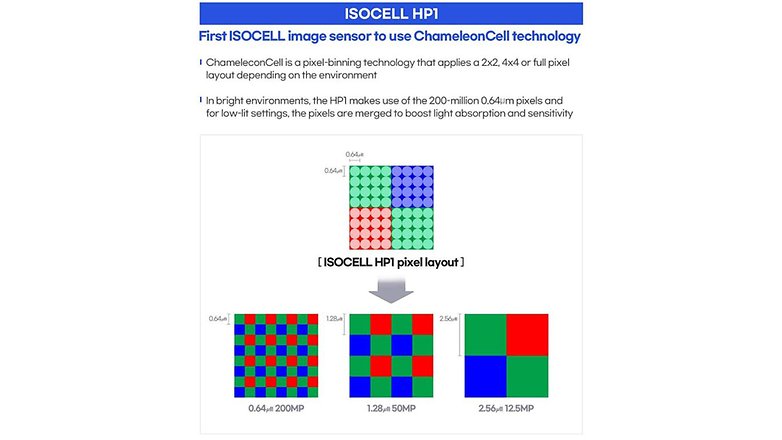This is what a smartphone with 200 Megapixels looks like


Samsung introduced its 200MP camera sensor dubbed as ISOCELL HP1 last year. And after just a few months, the humongous sensor is spotted on the upcoming flagship Motorola Frontier – and it is looking ready for prime time.
TL;DR
- Samsung's 200MP sensor is spotted in an actual smartphone.
- Having more megapixels means more advantages – but also challenges.
- Flexible pixel binning combines varying amounts of pixels into one effective pixel.
Motorola's Frontier flagship could be the first smartphone to equip Samsung's 200MP sensor. This actual live shot of the device has been leaked and is showing a massive camera hump on its back supported by a f2.2 lens and 200MP HP1 OIS label. There will be two secondary sensors coming with the main 200MP sensor as well but there are no details regarding those.

What are the benefits of Samsung's 200MP sensor for camera phones?
Technically speaking, the 200MP Isocell HP sensor is measured at 1/1.22-inch with 0.64μm pixel size – which places it among the largest smartphone camera sensors out there. It may only be topped by the rumored Sony IMX800 with 50MP resolution that we may see in the Xiaomi 12 Ultra.
Samsung is playing by the numbers here with their focus of not having how many millions. Instead, they are highlighting the different advantages of the sensor which include two levels of pixel binning (combining pixels into one) while creating brighter and sharper images.

With the use of pixel binning, it can produce 50MP images out from the 200MP by combining four pixels into one. The next level is creating 16MP images by combining 16 neighboring pixels into one much more effective single pixel and overall better image quality. This is also true for video recording where there is no need to crop the full 8K and 4K resolutions.
Perhaps, the only downside of having this huge sensor is the space it will consume on a smartphone making bulky camera humps like on the Motorola Frontier and Xiaomi 12 Ultra. It is still up to the OEM on how to keep the thickness of the device at minimum.
What are your thoughts about having large sensors for extra thickness in our future smartphones? Will it be practical? Let us know in the comment section.
Source: SamMobile



















Without significant lumination, how useful can 200MP be? In astrophotography higher pixel density in a small sensor is not generally desired because so few photons land on each sensor. My guess is that digital zooming is not going to be the strength of this sensor. I have an S21 Ultra and optical zoom is great but above 10x zoom it's digital and it even with massive real-time image processing prowess, shots at 20x and 30x zoom aren't great.
I just wonder how "processed" the photos will be (I shoot raw all the time on my phone & my d-SLR). Typically the more "pixels" you stuff in a tiny sensor, it can increase the signal to noise ratio. In a low light situation, with the distance between sensors being even smaller as you stuff more in that tiny space, on a low light photo, the camera increases the gain to the sensor, to pick up the light, resulting in a noisy photo, which, the camera software will attempt to remove, which can result in a "flat" phot.
"the only downside of having this huge sensor is the space it will consume on a smartphone making bulky camera humps"
Just put a bigger battery next to it and camera bump is no more. Everyone would like that!
I agree. But some manufacturers are starting to reduce the battery capacity because of fast charging features which is disappointing